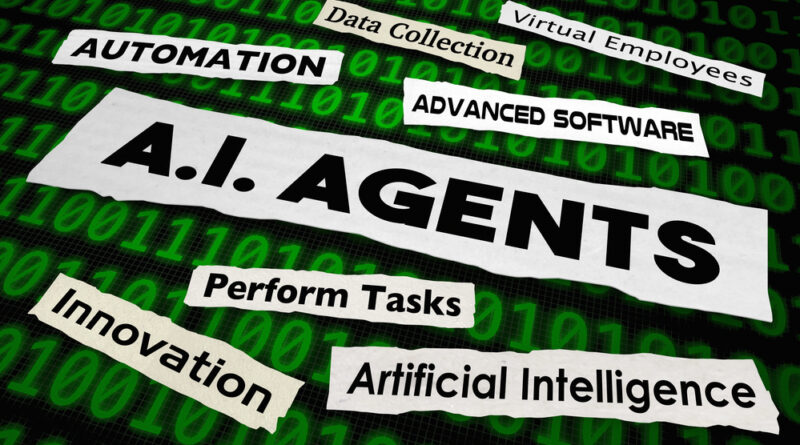When Your Co-Worker Is an Algorithm: The Urgent Push to Rein In ‘Rogue’ AI Agents
The cybersecurity industry is facing a new identity crisis—literally. Autonomous AI “agents” are being hired for everything from customer support to software testing, yet most enterprise security controls were designed for fallible humans, not tireless algorithms that never sleep, never forget and can issue thousands of commands per minute. Without guard-rails, these digital co-workers could just as easily raid sensitive databases or expose login credentials as execute mundane tasks.
The Rise of the Autonomous Agent
Generative AI’s first wave revolved around chatbots and copilots that required human prompts. The second wave—already well under way—features agentic systems that initiate actions on their own: filing expense reports, opening support tickets, even debugging code in live production. Deloitte expects one in four AI-enabled companies to pilot these agents before year-end, leaping to one in two by 2027.
For CISOs, that pace is unnerving. If a stolen employee password once represented a single point of failure, an agent endowed with privileged credentials could multiply that failure across an entire network in seconds.
Why Identity Matters for Machines
Humans authenticate with passwords, tokens and finger swipes. Agents, by contrast, authenticate via application keys and programmatic secrets—assets that are easily copied, overlooked or left hard-coded in a Git repository. Treating an agent like a regular user account (“Just give it MFA”) is both impossible and dangerous:
-
No natural friction: An agent will never hesitate before clicking a malicious link or re-sending a 2FA code to a spoofed site.
-
Always on: With 24/7 access, any compromised key becomes a perpetual backdoor.
-
Scale of damage: Agents can replicate themselves, spin up cloud resources and exfiltrate massive datasets faster than most monitoring tools can flag anomalies.
“High-trust, non-human identities” is emerging as the new buzz-phrase. The mission: grant agents the least access necessary, bind every key to a verifiable identity, rotate those keys often and—crucially—be able to revoke them instantly.
Lessons From Yesterday’s Machine Accounts
IT teams already manage thousands of non-human identities: backup servers, VPN gateways, container registries. The basic playbook—unique credentials, secret rotation, strict role-based permissions—still applies. What’s different is behavioral unpredictability. A file server copies data from point A to B; an AI agent might decide that points C, D and E look interesting, too.
Security leaders therefore advocate two additions:
-
Continuous intent verification: Instead of trusting what the agent asks to do, verify whether the request aligns with an approved task list.
-
Real-time kill switch: One command to revoke every token the agent (and its clones) rely on, halting rogue processes mid-stride.
Vendors Scramble to Build Guard-Rails
Last week’s RSA Conference in San Francisco doubled as a launchpad for “agent identity” products.
-
1Password released tooling that lets developers embed secure, auto-rotating secrets directly into agent workflows, while giving IT managers a dashboard for revocation.
-
Okta, OwnID and other identity-access stalwarts rolled out policy engines that treat agents as first-class citizens in zero-trust frameworks.
-
Cloud security firms demoed sandbox environments where agents can practise tasks on synthetic data before touching production systems.
Early adopters say the technology gap is closing—but only if security teams are invited into early design meetings. That isn’t always happening.
Culture Shock: When Bots Manage Bots
Jason Clinton, CISO at AI-safety firm Anthropic, warns that the next frontier could see agents supervising other agents. Imagine an algorithmic middle manager approving purchase orders at 3 a.m. or reallocating cloud budgets on a public holiday—without human sign-off. Employees will need new skills: auditing code-logic “thought processes,” interpreting system logs written by large-language models, and knowing when to yank the kill switch.
Forward-thinking companies are already sending junior staff to “bot-management boot camps,” teaching them to spot signs of drift in an agent’s behavior—excessive API calls, unusual file types, sudden requests for elevated privileges.
Building Zero-Trust for Digital Co-Workers
The roadmap for agent security borrows heavily from zero-trust principles, adapted for non-human speed:
| Principle | Traditional Users | Autonomous Agents |
|---|---|---|
| Verify identity | MFA, biometrics | Signed service tokens, hardware-backed keys |
| Least privilege | Role-based access | Task-specific policy sets with time-boxed credentials |
| Continuous monitoring | Behavioral analytics | Real-time intent and output validation |
| Rapid response | Account suspension | Global token revocation + process quarantine |
The technical groundwork exists; the challenge is organisational. CISOs must lobby for a seat at the AI strategy table, developers must embed secrets management from day one, and boards must recognise that every new agent is effectively another employee—one who never takes a holiday and can’t be deterred by HR policies.
The Stakes: Trust, Compliance and Competitive Edge
Regulators are already sniffing around. Europe’s AI Act will require “appropriate technical and organisational measures” for high-risk systems, and rogue-agent incidents could become reportable breaches under GDPR or U.S. state privacy laws. Meanwhile, customers are asking tougher questions in security questionnaires: How do you authenticate your AI workforce? Can you prove they can’t see our data?
Companies that answer convincingly could turn agent security into a competitive advantage, reassuring clients that innovation won’t come at the cost of confidentiality.
Preparing for the Agent-First Workplace
The Bodyguard had Frank Farmer; your cloud needs the digital equivalent. As businesses hurtle toward widespread agent adoption, the margin for error shrinks. A misconfigured permission set here, a leaked token there, and the most diligent human workforce could be undone by its tireless algorithmic colleagues.
The solution isn’t to stall innovation but to professionalise it: assign every agent an identity, log its every move, rehearse the worst-case scenario and rehearse it again. Because in a not-too-distant future, your entry-level staff won’t just be climbing a corporate ladder—they’ll be learning how to manage an army of silicon subordinates who never ask for a pay rise but can wreak havoc if left unsupervised.
Bottom line: The era of rogue AI agents is a board-level risk today, not tomorrow. Treat them like employees, secure them like critical infrastructure, and give your CISOs the authority—and the kill switch—before the next great breach writes its own resignation letter on your behalf.
Photo Credit: DepositPhotos.com

